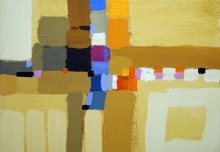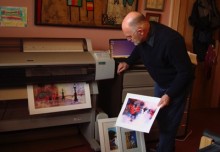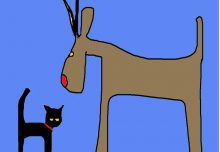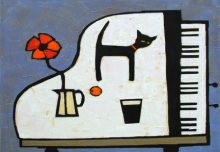BAYSWATER ROAD
Herding Cats in the Sex, Drugs and Rock’n’roll Years
By request here is something about life as a young struggling artist in the swinging sixties.
The sixties are known for sex, drugs, and rock and roll. But not for me. Sigh!
I was an art college graduate, married with two kids, teaching art in a secondary school in Bedford, struggling to survive on paltry pay. Then someone told me about a new free open-air art exhibition on Bayswater Road along the north side of Hyde Park in London every Sunday. So I went to London and had a look.
On the very next Sunday I drove 55 miles down-south and joined on the end of the exhibition with some of my paintings. Then every Sunday for many more years.
There wasn’t much going on in London in those early days. Shops were shut on Sundays by law. Pubs were only open for a couple of hours in the middle of the day, and closed all afternoon.
There was no commercial competition. We had Sunday visitors to ourselves.
The throng included Londoners in town for the day, and visitors to the capital from the rest of the UK, plus growing numbers of tourists from all over the world.
The weather played an important part in ones survival chances. If it rained, or was cold, or windy, the numbers of visitors plummeted. But on a good day ….. Hooray.
So some days I would sell nothing. But other times I could sell several originals.
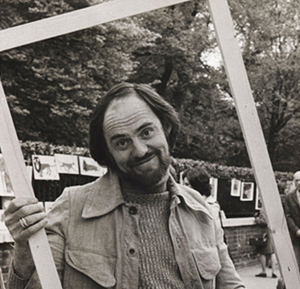
Colin Ruffell at Bayswater Road 1968
A successful Bayswater artist would paint all week and sell out on a fine Sunday.
The trick was to paint BIG, or BRIGHT, or CHEAP, or GOOD. Ideally a combination of more than one factor!
The first hand direct feedback from this exposure to a huge global audience was fantastically beneficial. I learned what worked and what didn’t.
As the exhibition became better known, more artists joined in. The successful ones stayed and thrived like me.
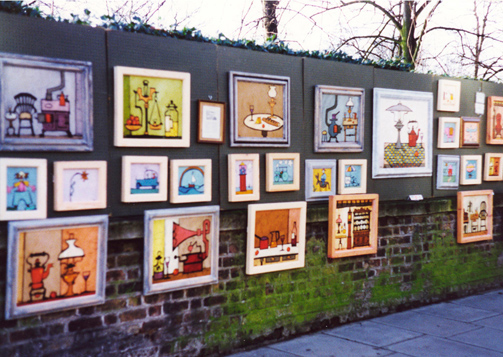
Colin Ruffell paintings at Bayswater Road art exhibition in 1960’s
But…..there were snags!
The first snag was that when I joined it was an illegal show! We did not have permission to be there.
Secondly, as word got around, the show grew and eventually the pictures stretched for a mile and a half all the way from Queensway to Speakers Corner at Marble Arch. Pressure for space meant that you had to get there very early to bag a spot. Groups of exhibiting artists employed muscular minders to arrive on Saturday evening and string off a section of the fence, patrol the section all night, and protect our pitches.
Thirdly, as the show became popular, other traders joined in. There were buskers, three card tricksters, and people selling all sorts of bric-a-brac, candles, ice cream, chestnuts, clothes, jewellery, even furniture.
Finally, the worthy Kensington residents complained and the Westminster City Council, under pressure, threatened to evict us all.
So the artists got together to form an association that would self-regulate the show.
Herding cats.
That is where I discovered that getting two hundred artists to agree about anything is a lot like herding cats. It is something to do with our right brains dominating left brains, or maybe the fact that all artists experience a lot of rejection and compensate by being defensive and bloody minded.
But by this time the art show had become very popular with the general public.
We measured the footfall on a fine weather day and reckon that nearly 100,000 people could visit the show.
After many long meetings, and Machiavellian negotiations, the Westminster City Council backed us.
They shortened the exhibition length, expelled the non-artists, introduced street traders licences for set pitches, created rules about permitted exhibits, and expected regular attendance. And charged a fee that paid for inspectors who patrolled the show.
The challenge from the forces of bureaucracy had sorted the men from the boys. Thriving artists had so much to gain and much to lose. We learned to accept and liaise with authority. I had discovered the fun of organising and some techniques of cat herding.
Some of us formed an ‘elite’ group and were invited to exhibit in Japan, U.S.A., and South America. We are still friends 40 years later.
I was ambitious and wanted to move into other areas of the fine art business that weren’t so dependent on fine weather. So eventually, in the early seventies, I left ‘The Road’ and went into galleries.
But that is another story for a future blog post.

